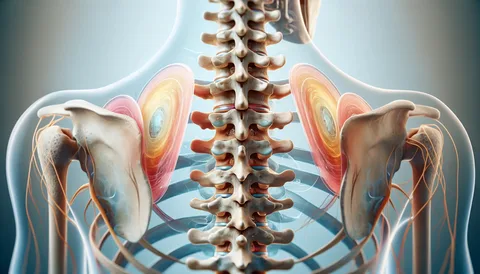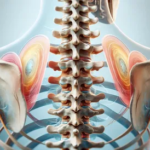ICD 10 DJD, more commonly known as osteoarthritis, is one of the most prevalent chronic conditions affecting millions of people worldwide. With the growing need for accurate medical documentation, healthcare providers and coders rely on the ICD-10 (International Classification of Diseases, 10th Revision) system to properly classify and record DJD diagnoses. This coding system ensures consistency in medical records, billing, insurance claims, and research.
In this blog, we will break down what ICD-10 DJD means, why it matters, how codes are structured, and the most commonly used ICD-10 codes for DJD.
What is DJD (Degenerative Joint Disease)?
ICD 10 DJD, or osteoarthritis, is a chronic condition caused by the gradual breakdown of cartilage within the joints. As the protective cartilage wears down, bones begin to rub against each other, leading to pain, stiffness, swelling, and reduced mobility.
Common Risk Factors for DJD:
-
Age: Most common in individuals over 50.
-
Genetics: Family history of arthritis increases risk.
-
Obesity: Extra weight puts pressure on weight-bearing joints.
-
Injuries: Past joint injuries can trigger earlier onset.
-
Occupation: Jobs requiring repetitive joint use.
DJD can affect any joint, but it is most common in the:
-
Knees
-
Hips
-
Spine
-
Hands
Why ICD-10 Codes Matter in DJD
The ICD-10 coding system is essential for healthcare professionals, insurers, and researchers. For DJD specifically, ICD-10 codes help in:
-
Accurate Diagnosis Documentation
Proper coding ensures patient records clearly reflect the type and location of arthritis. -
Insurance & Billing
Claims may be denied or delayed without precise ICD-10 codes. -
Treatment Planning
Specific codes guide providers in tailoring treatment based on the affected joint(s). -
Public Health Research
Data collected from ICD-10 codes supports research into arthritis prevalence, risk factors, and healthcare costs.
Understanding ICD-10 DJD Codes
In ICD-10, DJD is typically coded under “M15–M19,” which covers osteoarthritis. The exact code depends on the location of the arthritis, whether it is primary, secondary, or unspecified, and whether multiple joints are affected.
General Structure of ICD-10 Codes for DJD:
-
M15 – Polyosteoarthritis (affecting multiple joints).
-
M16 – Osteoarthritis of the hip.
-
M17 – Osteoarthritis of the knee.
-
M18 – Osteoarthritis of the first carpometacarpal joint (thumb).
-
M19 – Other and unspecified osteoarthritis.
Common ICD-10 Codes for DJD
Here is a breakdown of commonly used ICD-10 codes for degenerative joint disease:
1. Polyosteoarthritis (Multiple Joints)
-
M15.0 – Primary generalized (multiple joints).
-
M15.9 – Polyosteoarthritis, unspecified.
2. Hip Osteoarthritis
-
M16.0 – Primary osteoarthritis of both hips.
-
M16.1 – Primary osteoarthritis of one hip.
-
M16.4 – Post-traumatic osteoarthritis of hip.
-
M16.9 – Osteoarthritis of hip, unspecified.
3. Knee Osteoarthritis
-
M17.0 – Bilateral primary osteoarthritis of knee.
-
M17.1 – Unilateral primary osteoarthritis of knee.
-
M17.4 – Post-traumatic osteoarthritis of knee.
-
M17.9 – Osteoarthritis of knee, unspecified.
4. Hand/Thumb Osteoarthritis
-
M18.0 – Primary osteoarthritis of both first carpometacarpal joints.
-
M18.1 – Primary osteoarthritis of one carpometacarpal joint.
-
M18.9 – Osteoarthritis of carpometacarpal joint, unspecified.
5. Other & Unspecified Osteoarthritis
-
M19.0 – Primary osteoarthritis of other joints.
-
M19.1 – Post-traumatic osteoarthritis of other joints.
-
M19.2 – Secondary osteoarthritis of other joints.
-
M19.9 – Osteoarthritis, unspecified site.
Example: Coding a Patient Case
Case: A 65-year-old woman diagnosed with bilateral primary osteoarthritis of the knees.
Correct ICD-10 Code: M17.0 – Bilateral primary osteoarthritis of the knee.
This example highlights why accurate coding is crucial. Instead of using a generic “osteoarthritis unspecified” code, selecting the right ICD-10 code ensures clarity in the patient’s medical records and insurance claims.
Primary vs Secondary DJD in ICD-10
One of the most important distinctions in coding DJD is whether it is primary or secondary.
-
Primary DJD: Occurs naturally due to aging and wear-and-tear without an underlying cause. Example: M17.0 (bilateral primary OA of the knee).
-
Secondary DJD: Caused by another condition such as injury, obesity, congenital deformity, or metabolic disease. Example: M19.2 (secondary OA of other joints).
Correctly identifying primary vs secondary DJD impacts both treatment strategies and billing accuracy.
Tips for Accurate DJD Coding
-
Identify the Exact Location – Always note which joint(s) are affected.
-
Determine Laterality – Is it left, right, or bilateral? ICD-10 requires specificity.
-
Clarify the Type – Is it primary, secondary, post-traumatic, or unspecified?
-
Use Detailed Clinical Notes – Ensure physician documentation supports the chosen code.
-
Avoid Unspecified Codes – Use M19.9 (unspecified) only when no additional information is available.
Challenges in DJD Coding
Despite the structured ICD-10 system, coders and providers often face challenges:
-
Incomplete Documentation: If a physician notes only “arthritis,” the coder may be forced to use a less specific code.
-
Laterality Errors: Forgetting to specify left, right, or bilateral can result in rejected claims.
-
Confusion Between Types: Distinguishing between primary, post-traumatic, and secondary DJD can be tricky without proper clinical detail.
Importance of Accurate DJD Coding in Healthcare
Accurate ICD-10 DJD coding goes beyond billing—it plays a vital role in the healthcare system. Proper coding helps track the prevalence of arthritis, supports medical research, improves patient outcomes, and ensures insurance claims are processed smoothly.
As populations age and DJD becomes even more common, precision in medical coding will continue to be critical for both healthcare providers and patients.
Conclusion
ICD 10 DJD is essential for accurately classifying and documenting degenerative joint disease. With codes ranging from M15 to M19, healthcare professionals can specify the exact joint, laterality, and type of osteoarthritis. By applying these codes correctly, providers improve patient care, facilitate insurance reimbursement, and support valuable health research.
For medical coders, understanding the nuances of DJD codes is not just about compliance—it is about ensuring clarity, accuracy, and better healthcare outcomes.





